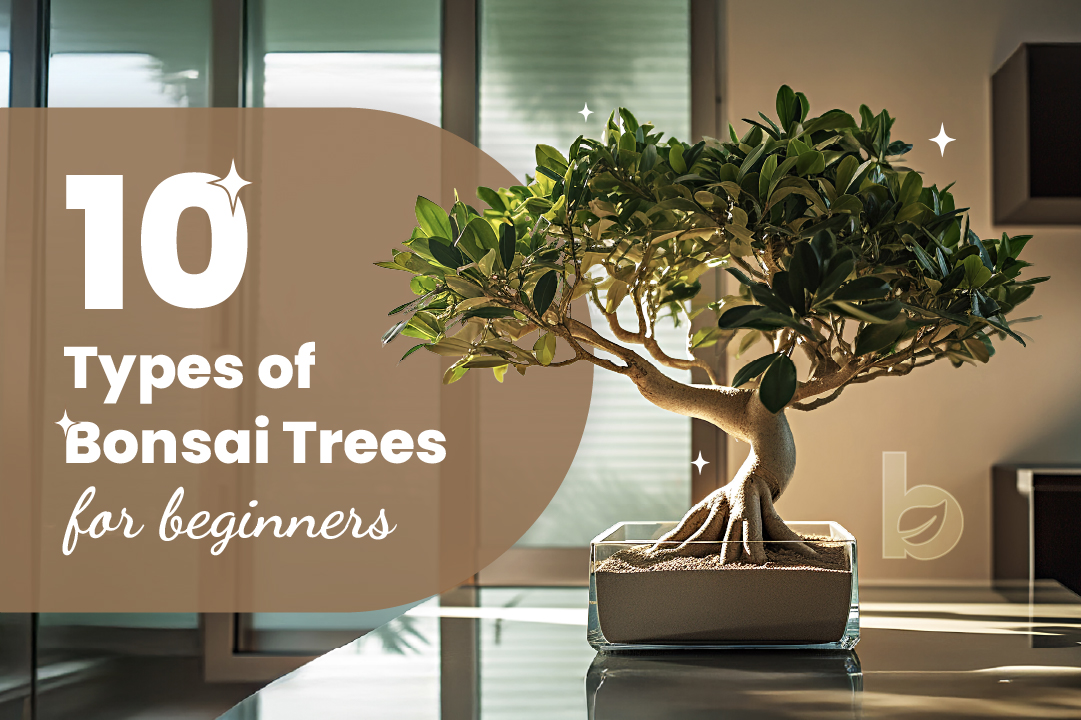
Are you fascinated by bonsai trees but don’t know where to start? Growing a bonsai is a rewarding experience, bringing a touch of nature and tranquility into your home. However, choosing the right bonsai tree is crucial for beginners. Some varieties require intricate care, while others are more forgiving. To help you get started, we’ve compiled a list of 10 types of bonsai trees that are perfect for beginners.
1. Ficus Bonsai (Ficus Retusa)
If you’re looking for a low-maintenance bonsai tree, the Ficus bonsai is an excellent choice. This hardy plant thrives indoors and can tolerate occasional neglect. Its glossy leaves, aerial roots, and ability to adapt to different conditions make it a favorite among beginners.
Care Tips:
- Prefers bright, indirect sunlight.
- Water when the topsoil feels dry.
- Can tolerate humidity and irregular watering.
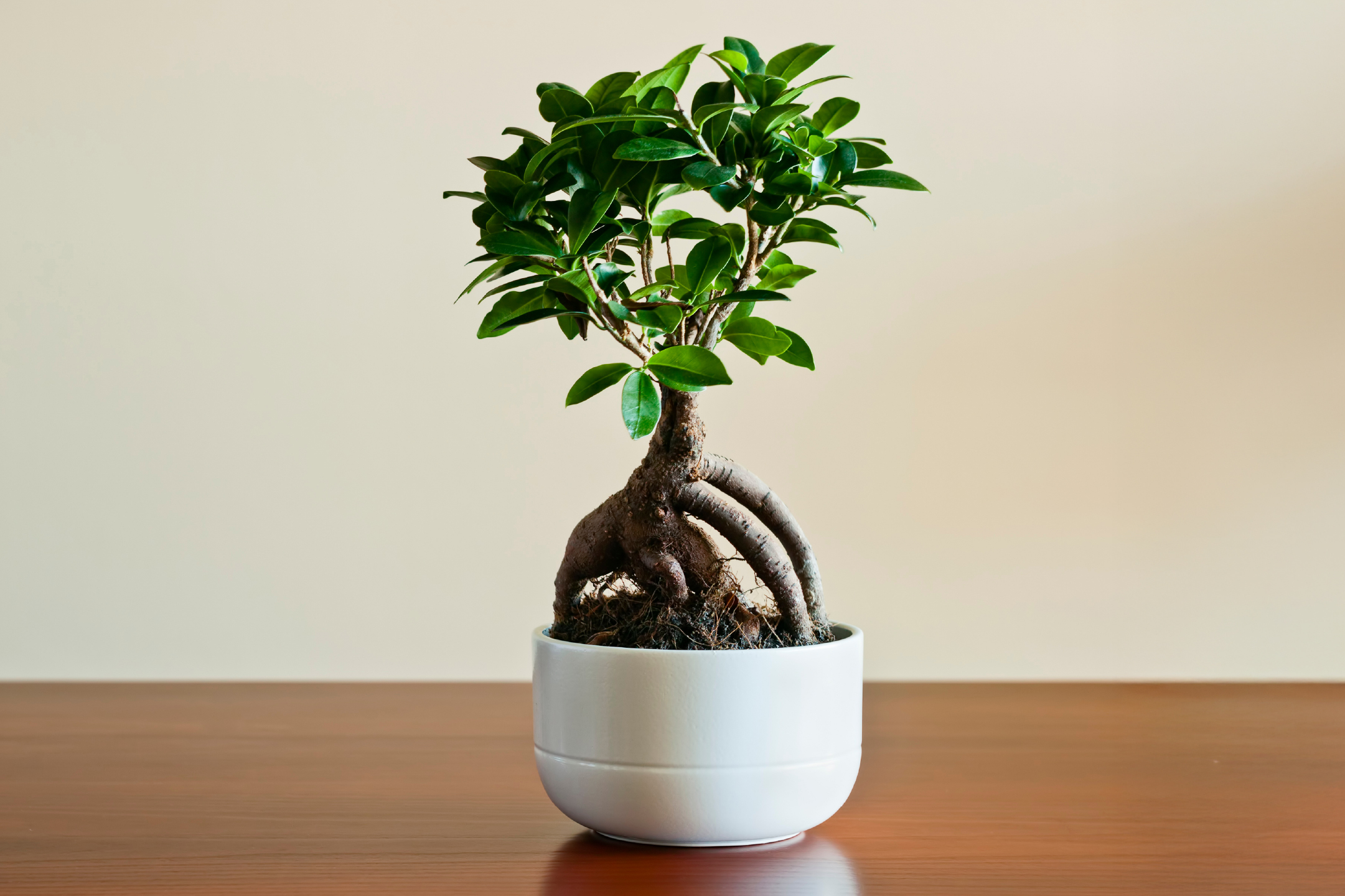
2. Jade Bonsai (Crassula Ovata)
Jade bonsai, also known as the money tree, is a beginner-friendly option due to its resilience and minimal watering needs. This succulent-style bonsai has thick, oval-shaped leaves that store water, making it drought-resistant.
Care Tips:
- Prefers bright, indirect light.
- Water sparingly, allowing soil to dry out between waterings.
- Avoid overwatering to prevent root rot.
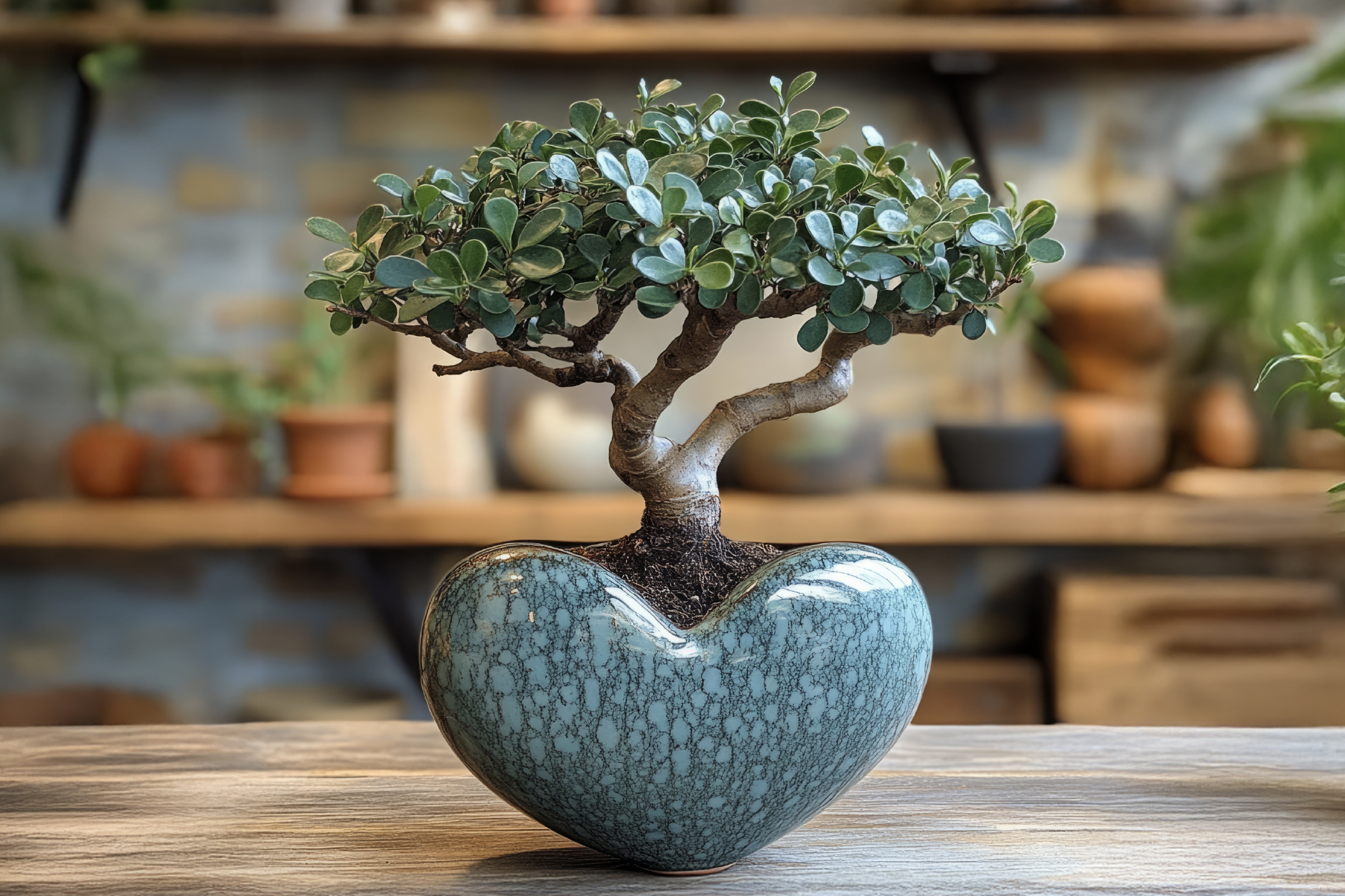
3. Chinese Elm Bonsai (Ulmus Parvifolia)
A classic choice, the Chinese Elm bonsai is widely recommended for beginners. It features delicate, serrated leaves and a naturally elegant trunk shape. It adapts well to both indoor and outdoor environments.
Care Tips:
- Enjoys bright light and moderate humidity.
- Water regularly, keeping the soil slightly moist.
- Responds well to pruning and shaping.
4. Juniper Bonsai (Juniperus spp.)
The Juniper bonsai is one of the most popular outdoor bonsai trees and a great choice for beginners who prefer a tree that requires minimal fuss. Its needle-like foliage and rugged aesthetic make it visually striking.
Care Tips:
- Needs full sun for healthy growth.
- Water thoroughly but avoid waterlogging.
- Requires good airflow to prevent fungal issues.
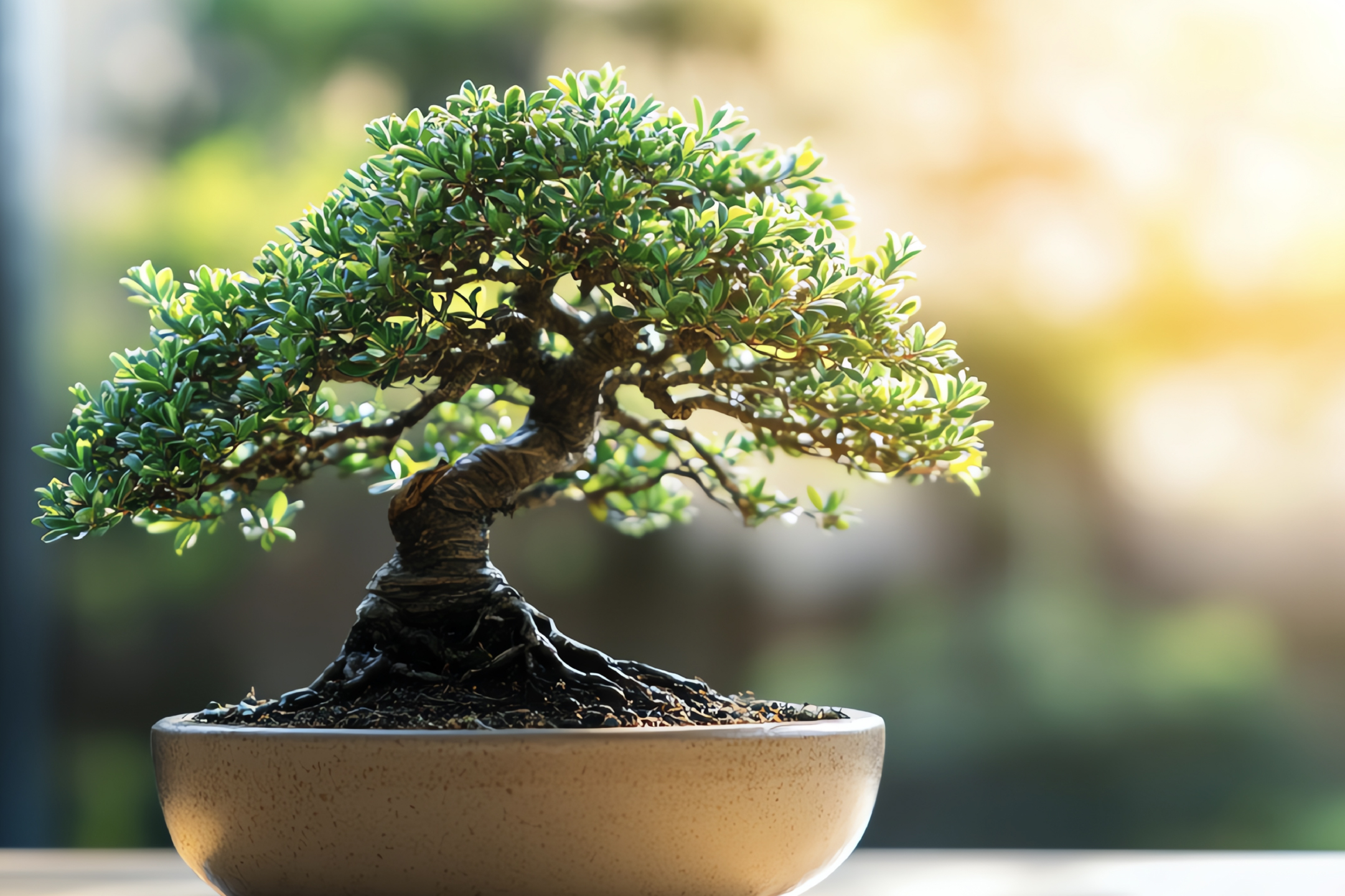
5. Bougainvillea Bonsai (Bougainvillea Glabra)
For those who love vibrant colors, the Bougainvillea bonsai is a fantastic option. It produces stunning pink, purple, or orange bracts that add a pop of color to any space.
Care Tips:
- Requires full sun for optimal flowering.
- Allow soil to dry slightly between waterings.
- Prune regularly to maintain shape and encourage blooms.
6. Serissa Bonsai (Serissa Japonica)
Also known as the Tree of a Thousand Stars, the Serissa bonsai is famous for its tiny white flowers that bloom multiple times a year. It’s slightly more delicate but still manageable for beginners willing to provide consistent care.
Care Tips:
- Prefers bright, indirect light.
- Keep soil consistently moist.
- Avoid sudden temperature changes.
7. Dwarf Pomegranate Bonsai (Punica Granatum ‘Nana’)
If you want a fruiting bonsai tree, the Dwarf Pomegranate is an exciting choice. It produces small pomegranate fruits and bright orange-red flowers, making it an eye-catching addition to any collection.
Care Tips:
- Loves full sun and warmth.
- Water regularly but allow soil to dry slightly between waterings.
- Prune to maintain its miniature size.
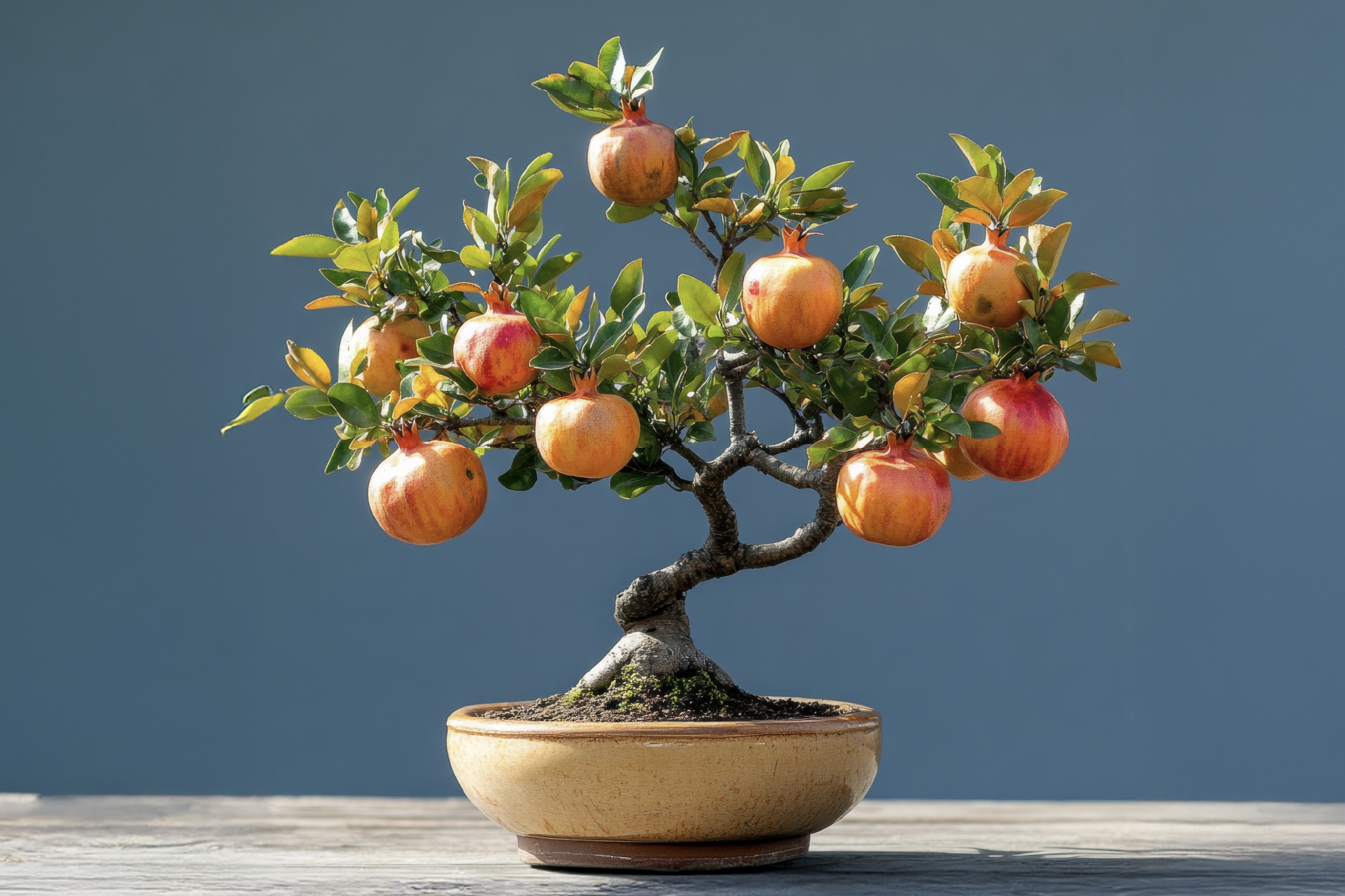
8. Azalea Bonsai (Rhododendron spp.)
The Azalea bonsai is known for its spectacular blooms in shades of pink, red, and white. While it requires a little extra attention, its stunning flowers make it worth the effort.
Care Tips:
- Needs bright, indirect light.
- Water thoroughly, keeping soil moist.
- Requires acidic soil for healthy growth.
9. Japanese Maple Bonsai (Acer Palmatum)
If you love seasonal color changes, the Japanese Maple bonsai is a great choice. Its leaves turn vibrant shades of red, orange, and yellow in the fall, adding seasonal charm to your collection.
Care Tips:
- Prefers partial shade and cool climates.
- Keep soil consistently moist.
- Protect from strong winds and extreme heat.
10. Boxwood Bonsai (Buxus spp.)
The Boxwood bonsai is a hardy and slow-growing variety, making it a reliable choice for beginners. Its small, dense leaves and rugged bark create a classic bonsai look with minimal effort.
Care Tips:
- Enjoys bright, indirect sunlight.
- Keep soil slightly moist.
- Can be shaped into various bonsai styles.
Final Thoughts
Growing a bonsai tree is a fulfilling hobby that brings nature closer to you. With these beginner-friendly types of bonsai trees, you can start your bonsai journey with confidence. Whether you prefer the resilience of a Ficus, the vibrant flowers of an Azalea, or the elegance of a Japanese Maple, there’s a perfect bonsai tree for you.
Happy bonsai growing!
FAQs
- What is the easiest bonsai tree for beginners?
The Ficus bonsai is one of the easiest bonsai trees for beginners. It is a hardy and adaptable species that can tolerate a variety of indoor conditions. Ficus bonsai trees require minimal maintenance and are forgiving if you occasionally forget to water them. Their ability to withstand pruning makes them a great choice for those new to bonsai cultivation.
- Can bonsai trees be grown indoors?
Yes, many bonsai trees can thrive indoors as long as they receive adequate light, humidity, and proper care. Popular indoor bonsai varieties include Ficus, Jade, Chinese Elm, and Schefflera. Placing them near a bright window and occasionally misting their leaves can help maintain the right growing conditions. However, some bonsai trees, such as Juniper, prefer outdoor environments where they can experience natural temperature changes.
- How often should I water my bonsai tree?
The watering frequency of a bonsai tree depends on factors such as species, pot size, and climate. Generally, bonsai trees should be watered when the top layer of soil feels slightly dry to the touch. Overwatering can lead to root rot, while underwatering can cause the tree to dry out. Checking soil moisture regularly and adjusting your watering schedule based on seasonal changes is essential for maintaining a healthy bonsai.
- Do bonsai trees need fertilizer?
Yes, bonsai trees require regular fertilization to support their growth. Using a balanced fertilizer during the growing season (spring and summer) ensures that the tree receives essential nutrients. In winter, reduce feeding for species that go dormant. Organic or liquid fertilizers are ideal for slow, steady nutrient absorption.
- How do I shape my bonsai tree?
Shaping a bonsai tree involves a combination of pruning and wiring techniques. Pruning helps control growth, improve structure, and maintain the tree’s miniature appearance. Wiring is used to guide branches into a desired shape. Regular trimming encourages compact growth, preventing the tree from becoming too bushy. Be patient, as shaping a bonsai is a gradual process requiring careful attention.
- Can I grow a bonsai tree from seeds?
Yes, but growing a bonsai from seeds requires patience and dedication. It can take several years before the seedling develops into a mature, styled bonsai. This process, known as "misho," allows you to control the tree’s growth from the very beginning. However, if you want a bonsai with an established trunk and structure, starting with a young plant or a pre-bonsai tree may be a quicker option.



